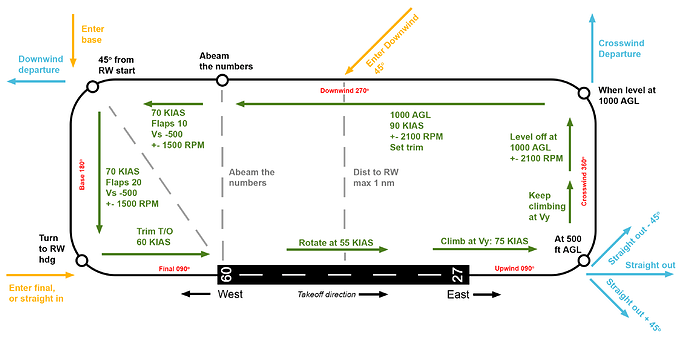Well, there’s quite a bit more to it than that part, but it’s a base to start from. The whole process is meant to teach you what the air does that is flowing over your wing, and how to maintain that steady flow by keeping your aircraft at speed so it doesn’t fall from the skies in an uncontrolled manner 
I’ve started flying in games since, i guess 1993-ish? Been a huge fan since, and have learnt quite a lot.
from 2001-ish i learnt to fly a badly stricken aircraft that had controlsurfaces shot up in iL2, complements of other human beings using me for target practice. That combat flying teaches one that not just your stick and rudder are important, also engine management, flaps or even a gear that can help slow an aircraft down when needed, or, in the event of not having those complementary control surfaces, one just keeps the speed up to stay afloat and “lands”(read-> ditch) it on any smooth surface without hedges without killing more of the crew. Just remember that the airplane, is just a vessel that can be replaced… humans can be replaced too, but it is quite frowned upon when one does everything to keep the vessel alive, and kills oneself in doing so. Understanding how the aerodynamics work on any airplane takes quite a bit of time, it is achieved by doing alot of pattern work, learning the instruments and how to correctly read it, but foremost understanding what your position is in 3-dimentional space. The awareness of it all is what makes flying such an epic achievement. I see alot of users here use the onboard computers to help them make flying look easy, but when you strap them into a simple contraption like a cessna, with round guages that have needles in them, some dont even know how to start those… (which in the real world, you’d start with… basically some have jumped on the big airplanes and learnt them completely, without knowing the basics of flight… yet still they do an amazing job with the big ones  )
)
So yeah, you are definately on the right track. Next step would probably be stalls and spins (at a higher altitude)… you get to know your aircraft better, and it might save your (virtual) life one day having done those practices beforehand, as you might run into an aircraft that actually requires a higher speed upon landing, or you’ve forgotten your flaps on one occasion for example, realising you are in trouble and acting appropriately is one of the most important things of air safety. Same goes for that approach, if you dont get it right, if you are too low or too high for your liking, just floor it and go-around. It makes no sence if all your sences are telling you something is wrong, but you still continue to do wrong… make it right, retry.
The funny thing is, after you’ve done your stalls and spins, you need to remember where to find your airport again. If you know where you fly to do the practice, you should also know your back-course to get back to your airport. minus some deviations as focusing on one thing, might take you miles further than where you thought you were, so awareness of that 3-dimensional position is key.
Hope i didn’t startle you or confuse you, but flying is just an awsome way to pass the time for me… in real life i’m afraid of flying, as i’ve simulated an awful lot of times what can actually go wrong(but mostly an inner ear sensitivity issue that makes my brain go ballistic), but i’ve focused on the things that have gone right and am a better virtual pilot for it. It’s fun, and doesn’t cost as much as the real world equivalent.
Have a great flight, Captain(s), and remember, there’s a whole world out there to explore. So if you want to get your feet wet, pick a spot on the map or an airport, and fly around that for a few flights, see what it’s like. (and one tip, if your aircraft is not performing as well, you might inadvertantly be at a high altitude airport, so lean that mixture and dont pull on the controls too hard, or the flight will be over quite shortly.) The views you get, might be very astonishing, so there’s a bonus for learning and a bonus in the view. Whatever you do, make sure you have fun!
Woof ~ Woof & Salute!
Steiny
![]()
